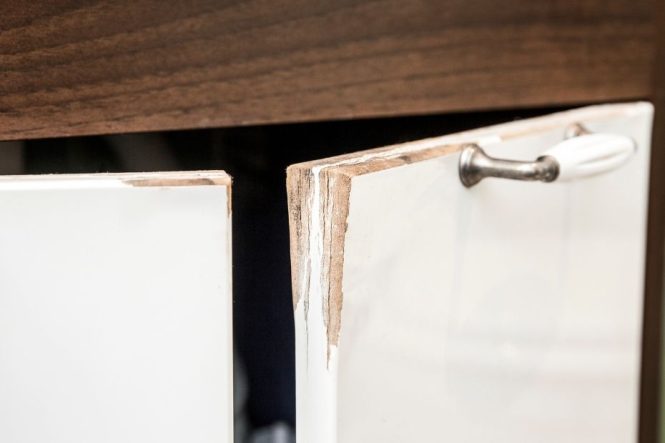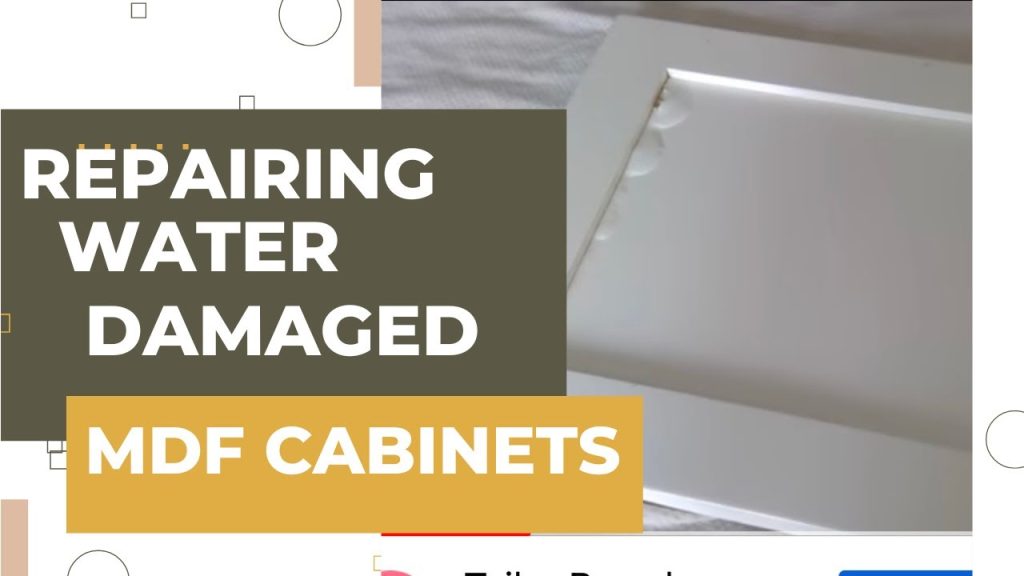

Repairing water-damaged cabinets is a crucial task for homeowners. Water damage can severely impact the structural integrity and aesthetic appeal of your cabinetry, leading to significant problems if not addressed properly. This comprehensive guide will walk you through the process of assessing and repairing water-damaged cabinets, ensuring that your kitchen or bathroom remains functional and beautiful. We will cover everything from identifying the extent of the damage to selecting the right materials and techniques for the job. We’ll also provide valuable insights into preventing future water damage to cabinets. The structure of this article will first define the scope of water damage to cabinetry, then walk through a step-by-step assessment of water damage, and finally offer solutions for repairing the damage based on the identified issues.
Understanding the Scope of Water Damage to Cabinets
Identifying the Extent of Damage
Water damage to cabinets can range from minor surface staining to extensive structural damage. Understanding the extent of the damage is crucial for choosing the right repair method. Visual inspection is the first step. Look for signs of water intrusion, such as discoloration, swelling, warping, or the presence of mold and mildew. Assess the affected areas thoroughly to determine if the damage is confined to a single cabinet or has spread to adjacent components. This will inform your overall strategy and materials required for restoration.
Causes of Water Damage to Cabinets
Plumbing leaks, appliance malfunctions, and even overflowing sinks can cause water damage to cabinets. Understanding the source of the water damage is critical for preventing future issues. Addressing the underlying problem is often a key part of the process, such as fixing a leaky faucet or water-damaged insulation. Identify the root cause, and you’ll be well on your way to a solution that goes beyond surface-level repairs.
Assessing Water Damage to Cabinets
Visual Inspection
Thorough visual inspection is the first step. Examine the cabinets for discoloration, swelling, warping, or signs of mold and mildew. Document the extent of the damage. Take pictures to help determine the repair process. This helps in determining the severity and scope of the problem. Pay special attention to areas like corners, joints, and seams, as these are often vulnerable to water infiltration.
Moisture Detection Methods
Employ tools like moisture meters to accurately determine the moisture content within the wood. This will help determine the severity of the damage and guide the repair process. Excessive moisture can lead to structural failure and rot, making it crucial to identify the problem areas. A moisture meter helps differentiate between superficial moisture and deep penetration.
Repairing Water-Damaged Cabinets: Solutions & Techniques
Cleaning and Drying
Remove any loose debris or affected materials, like damaged wood or loose particles. Ensure thorough drying of the affected areas to prevent mold and mildew growth. Proper drying is crucial for preventing secondary problems such as structural instability or further decay. Ensure the area is free of moisture, either through air circulation or specialized equipment. Consider using fans or dehumidifiers to expedite the drying process. For instance, place fans in strategic locations to facilitate air circulation and prevent standing water.
Repairing Damaged Wood
Depending on the damage, consider patching or replacing damaged wood sections. Patching involves carefully filling gaps and cracks with a suitable wood filler. The filler should match the cabinet’s existing wood color and grain. Repairing cabinet doors often necessitates replacing damaged panels. Professional cabinet repair technicians often use specialized techniques to precisely match the existing material for a seamless finish.
Preventing Future Water Damage
Addressing the Source
Identify the source of the water damage. Is it a leaky faucet, a faulty appliance, or a plumbing problem? Fixing the root cause of the leak or problem prevents future damage. Address plumbing issues promptly. Inspect appliances for leaks or malfunctions regularly. Professional plumbers can help to determine the specific causes and solutions for underlying issues.
Using Moisture Barriers
In areas prone to water damage, such as basements or kitchens, consider using moisture barriers to prevent water from reaching the cabinets. Water-resistant sealants and coatings are crucial to prevent future damage. Implementing these measures can protect your cabinetry from further water damage and ensure structural integrity.
Professional Help for Complex Damage
Consulting Restoration Experts
For extensive water damage, consulting a professional restoration company is highly recommended. A restoration specialist has the expertise and equipment to assess the damage effectively and carry out necessary repairs. Professionals can perform more complex techniques like complete cabinet replacements, if necessary. Consider the extent of the problem; for extensive damage, expert services are necessary for a complete and quality restoration.
Identifying When to Call a Professional
If you’re unsure about the extent of the damage or the appropriate repair techniques, consult a qualified restoration specialist. Significant damage, including structural issues or the presence of mold, often warrants professional assistance. They can offer expert guidance to avoid further damage to your cabinets and ensure long-term durability.
In conclusion, repairing water-damaged cabinets requires a systematic approach, focusing on both the immediate damage and long-term prevention. By understanding the causes, assessing the extent of the damage, and employing the correct repair methods, you can restore your cabinets to their former glory. Remember to prioritize safety and seek professional help when needed. Contact a qualified restoration specialist for a comprehensive assessment and personalized repair plan. Let’s keep your cabinets in tip-top shape!